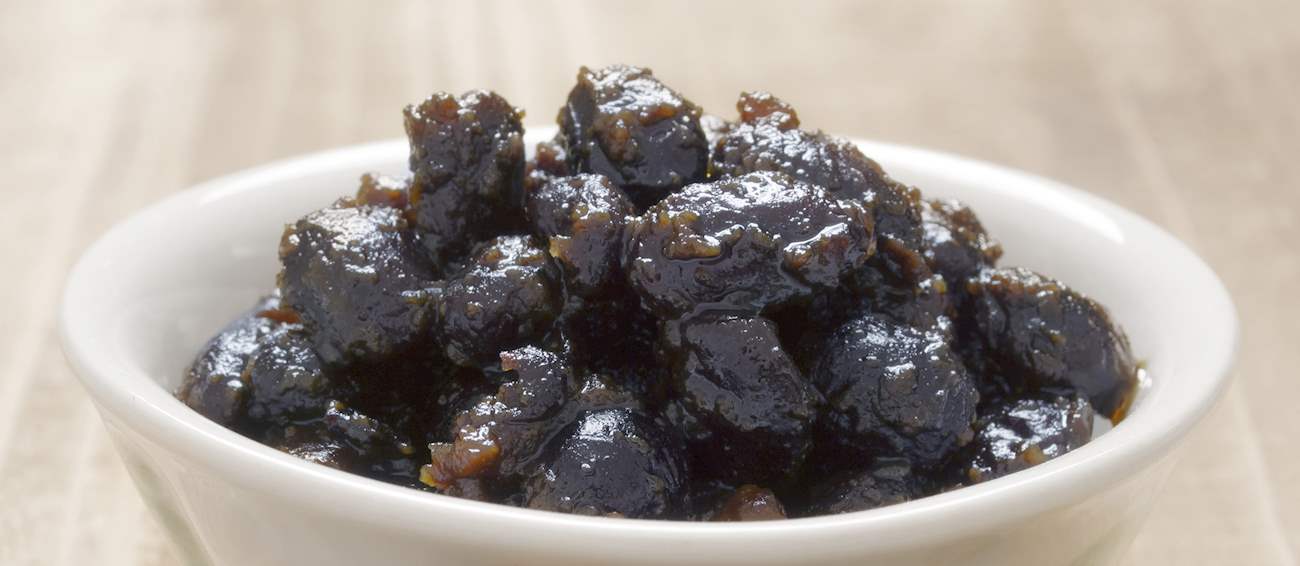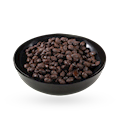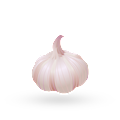Best Soybeans Types in the World
MAIN INGREDIENTS
Black bean sauce, also known as douchi sauce, is a popular condiment in Chinese cuisine. It's made with fermented and salted black soybeans, which are used to give the sauce a strong, savory, and slightly bitter flavor. The beans are typically mashed and mixed with other ingredients such as garlic, ginger, sugar, and soy sauce to create a rich, thick sauce.
Black bean sauce is often used in stir-fry dishes, marinades, and as a base for other sauces. It's particularly known for its use in dishes such as mapo tofu, black bean chicken, and jjajangmyeon, a Korean-Chinese noodle dish. The unique taste of black bean sauce brings a depth of flavor to dishes that is often described as "umami," a fifth basic taste that is best described as savory.
Also known as Chinese fermented black beans, douchi is an indispensable part of Chinese cuisine. The black soybeans are heavily salted and fermented, resulting in an extremely salty ingredient with a robust and pungent flavor.
They are rarely eaten plain and are usually used in classic Chinese dishes as a condiment or a seasoning. Since their taste resembles a mix of soy and fish sauce, they are often added to provide a unique flavor to Chinese culinary classics. In the cooking process, they develop a slightly sweet taste, which is a perfect match for stir-fry dishes, rice, and various Chinese sauces.
Edamame are fresh soybeans, their name literally translated to beans on branches. The soybeans are usually harvested before they are fully ripe, and are characterized by their crispy, firm texture. The name edamame was first mentioned in 1275, when the Buddhist saint Nichiren wrote a note of gratitude to a parishioner who left the edamame at the temple.
Edamame soybeans are often served as a side dish in some Japanese restaurants, but they can also be consumed as a light snack, eaten fresh from the pod. The first mention of consuming fresh soybeans dates back to the Song dynasty, when a poet named Lu You wrote about picking and eating soybeans in his poems.
MAIN INGREDIENTS
Furu or fermented bean curd is a traditional condiment made from soybeans. Soybeans are soaked, ground, and then boiled to create soy milk. Coagulants are added to the soy milk to curdle it, forming tofu, which is pressed into blocks and dried.
The semi-dry tofu blocks are then inoculated with a fermenting agent, which is often a type of mold, like Actinomucor elegans. The tofu is then left to ferment for days to months, depending on the desired flavor and texture. After fermentation, the tofu blocks are submerged in a mixture of salt, rice wine, and sometimes other seasonings and preservatives.
This mixture not only adds flavor but also helps preserve the tofu.
Nattō is an unusual Japanese dish consisting of fermented soybeans. The process of fermenting is time-consuming, but rather simple since it employs merely soaked soybeans and the bacterium Bacillus subtilis, known in Japan as nattō-kin. The final products result in a unique texture of firm beans combined with glutinous strings which hold the beans together.
If vigorously mixed, the dish becomes more viscous, creating a unique eating experience. Since it is produced by fermentation, nattō has a pungent, distinctive smell, often compared to that of a strong, aromatic cheese. Depending on the variety, it might even have a light smoky flavor.
Black soybean is a variety of soybean that's native to China and contains a variety of phytochemicals. The phytochemicals found in the dark exterior of black soybeans, such as antioxidants, are potentially effective in helping to reduce the risk of diabetes, cerebrovascular diseases, cancer, and depression.
These soybeans have long been used in Chinese medicine, while in Japanese folklore, the tea made from black soybean leaves is a cure for sore throat. Although the Japanese eat yellow soybeans in many foods such as soy sauce and natto, the black soybean is usually eaten only once a year in a traditional dish that's prepared for New Year's.
Hugan jiang is a traditional yellow bean sauce. This sauce is made from fermented soybean leftovers from the production of soy sauce. The leftovers are mixed with salt, flour, and water, sugar, or soy sauce. There are many varieties of yellow bean sauce and different spices and seasoning are added to each jar of this sauce.
Hugan jiang is often used in a variety of dishes such as stews and meat dishes.
TasteAtlas food rankings are based on the ratings of the TasteAtlas audience, with a series of mechanisms that recognize real users and that ignore bot, nationalist or local patriotic ratings, and give additional value to the ratings of users that the system recognizes as knowledgeable. TasteAtlas Rankings should not be seen as the final global conclusion about food. Their purpose is to promote excellent local foods, instill pride in traditional dishes, and arouse curiosity about dishes you haven’t tried.







